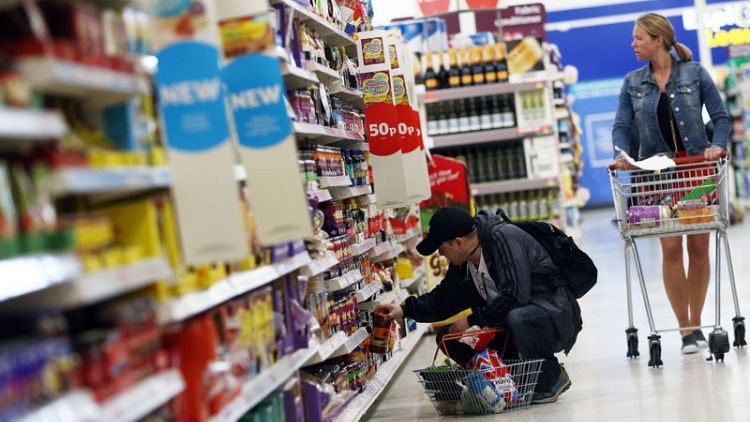LONDON (Reuters) - British inflation failed to rise as expected in October, according to official data on Wednesday that may raise questions about the strength of price pressures building in the economy ahead of Brexit.
Consumer prices rose at an annual pace of 2.4 percent in October, matching September's rate, the Office for National Statistics said. A Reuters poll of economists had pointed to a reading of 2.5 percent.
On Tuesday, the ONS said employees' basic wages rose at their fastest pace since 2008 over the three months to September.
That backed up the Bank of England's view that a long period of weak pay increases is ending, and that it will need to raise interest rates in response to keep inflation at its 2 percent target in coming years.
Still, the wage growth of 3.2 percent, excluding bonuses, remained meagre by historical standards when adjusted for rising prices.
Wednesday's official data showed core inflation -- a gauge of underlying price growth that strips out energy, food, alcohol and tobacco prices -- also held steady at 1.9 percent in October.
"Prices paid by consumers continued to rise at a steady rate with falls in food and clothing offset by rising utility bills and petrol, as crude (oil) prices continued to rise," ONS statistician Michael Hardie said.
The BoE expects inflation will drift down but will remain just above its 2 percent target in two years' time as it gradually raises borrowing costs.
Its forecasts are based on the assumption that there will be a smooth transition after Britain leaves the EU in March 2019 -- something that may hinge on deliberations in Prime Minister Theresa May's cabinet about a divorce deal on Wednesday.
Consumer price inflation hit a five-year high of 3.1 percent in November 2017, when the inflationary effect of the pound's tumble after the Brexit vote in June 2016 reached its peak.
The ONS figures suggested there may still be some short-term pressure in the pipeline for consumer prices.
Among manufacturers, the cost of raw materials -- many of them imported -- was 10.0 percent higher than in October 2017. Economists polled by Reuters had expected to see a 9.6 percent increase.
Manufacturers increased the prices they charged by 3.3 percent year-on-year compared with 3.1 percent in September, marking a four-month high and outpacing the consensus forecast of 3.1 percent.
The ONS said house prices in September rose by an annual 3.5 percent across the United Kingdom as a whole compared with 3.1 percent in August. Prices in London alone fell for a third month running, dropping by 0.3 percent.
(Reporting by Andy Bruce and Costas Pitas)



